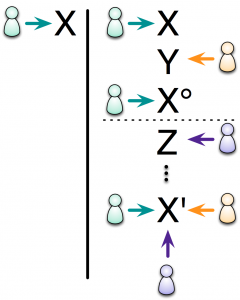Owing to a busy spring pushing the new book on mobile, I’ve been captured in a variety of ways. If you haven’t already seen too much of me talking mobile, here are some of the available options:
- Cammy Bean did an audio interview of me for Kineo (cut into sensible size chunks)
- Terrance Wing and Rick Zanotti hosted me for a #elearnchat video interview
- I also have given a series of webinars on mobile for a variety of groups, here’s a sample.
Also, with the Internet Time Alliance, we gave a webinar on Working Smarter.
Coming up in the near future:
As I mentioned before, I’ll be in Sydney for the Australasian Talent Conference talking games and social learning, and workshopping mobile and elearning strategy.
In addition, however, I’ll also be running a deeper ID session and then a game design workshop on the same trip with Elnet on the 30th and 31st of May and an event at the University of Wollongong (more soon).
In June, I’ll be presenting at the DAU/GMU Innovations in eLearning conference that’s always been an intimate and quality event.
Also in June, I’ll be running my mobile design workshop and presenting on several different topics at the eLearning Guild’s exciting new mobile learning conference, mLearnCon.
And I’ll be participating virtually with a mobile event with the Cascadia Chapter of ASTD also in June.
In August, I’m off to Madison Wisconsin to keynote the Annual Conference on Distance Teaching and Learning, as well as running a pre-conference workshop.
There’s more to come:
- The CSTD annual conference in November in Toronto.
- The Metro DC ASTD chapter in November as well.
- Other things still on the bubble; stay tuned!
All of these events have great promise regardless of my participation, and I encourage you to check them out and see if they make sense to you. If you attend one, do introduce yourself (I’m not aloof, just initially shy). Hope to catch up with you somewhere.



